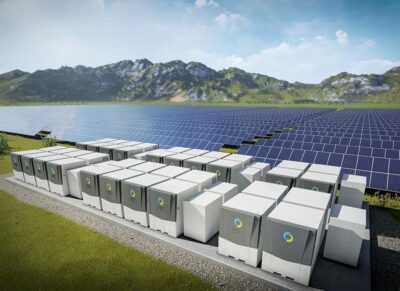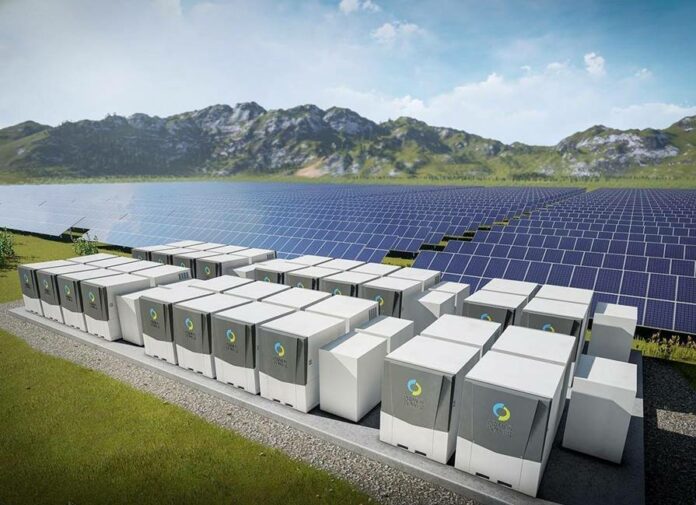BY KIKI TIDWELL
 Idaho Power is pinning its hopes on getting to its 100 percent-renewable-energy-by-2045 goal on a plan that it devised in 2006—to bring power 305 miles from Oregon to Idaho.
Idaho Power is pinning its hopes on getting to its 100 percent-renewable-energy-by-2045 goal on a plan that it devised in 2006—to bring power 305 miles from Oregon to Idaho.
The company is not going to build its own renewable-energy solar or wind farms in Idaho, where the naturally-occurring wind, solar, geothermal and hydro sources are outstanding. Unfortunately, this 2006 plan leaves Idaho ratepayers at risk; what will the power cost in the future from this out-of-state plant and will it even be available when we need it, if we are competing with others for this same power at the same time?
In 2006, Idaho Power hated renewables and as late as July 2012 ran a media campaign against wind power. For perspective on the pace of technology change since 2006, note that the IPhone was first introduced in 2007. Now solar power is the least-cost resource, with the Jackpot Solar power purchase agreement coming in at 2.175 cents per kWh. When Idaho Power had to agree to a majority of shareholders in 2008 to reduce carbon in its power production, ratepayers actually benefitted; ratepayers saved $17.5 million last year when coal plants were shut down early.
 But, unfortunately, Idaho Power is still very much behind other states when it comes to embracing and incorporating batteries as a way to ‘firm’ renewables to be on-demand power and to replace expensive transmission and fossil peaker plants. Idaho Power’s 2019 Integrated Resource Plan, which maps out the next 20 years of projects for the companies, shows that batteries are slated to be introduced 10 years down the road, in 2029, and then only 30 megawatts’ worth. Everybody else is building 400, 770, 1,000 and 3,000 megawatts of batteries now!
But, unfortunately, Idaho Power is still very much behind other states when it comes to embracing and incorporating batteries as a way to ‘firm’ renewables to be on-demand power and to replace expensive transmission and fossil peaker plants. Idaho Power’s 2019 Integrated Resource Plan, which maps out the next 20 years of projects for the companies, shows that batteries are slated to be introduced 10 years down the road, in 2029, and then only 30 megawatts’ worth. Everybody else is building 400, 770, 1,000 and 3,000 megawatts of batteries now!
“Hawaiian utility backs 460 megawatts of solar and nearly 3 gigawatt-hours of batteries as state moves to close its fossil plants.”[1] (Hawaii also has a 2045 100 percent clean energy goal.) “Earlier this month Southern California Edison selected seven projects adding up to 770 megawatts of 4-hour-duration battery systems slated to be completed by August 2021.”[2] Batteries are also replacing expensive peaker plants which only run for certain peak times of the year, “Strata Solar will begin construction in July on its 100-megawatt/400-megawatt-hour battery plant in Ventura County.”[3]
Massachusetts has already installed 108 megawatt hours as of February 2020, and has a plan for 1000 megawatt hours by 2025—five years![4]
As an Idaho Power ratepayer and shareholder, I am dismayed that my power company is so far behind technologically. The company is not maximizing its business returns by clinging to 14-year-old plans when it could be building its own power plants in Idaho. As well, it is leaving ratepayers at risk of future price increases, transmission line losses, and lack of supply if it continues to rely on power plants outside of Idaho.
It is high time for this company to get with it and put megawatts of batteries installation now in 2020 as part of the IRP portfolio!
[1] Greentech Media May 15, 2020 Jeff St. John https://www.greentechmedia.com/articles/read/hawaiian-electric-picks-460mw-of-solar-nearly-3gwh-of-storage-to-replace-power-plants
[2] Ibid
[3] https://www.greentechmedia.com/articles/read/strata-solar-moving-ahead-on-ventura-peaker-plant-replacement-battery
[4] Greentech Media Julian Spector April 2020, Emerging US Energy Storage Markets



